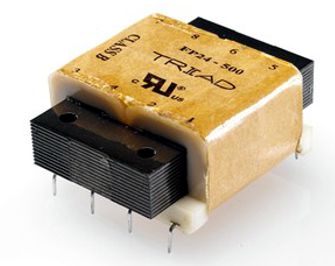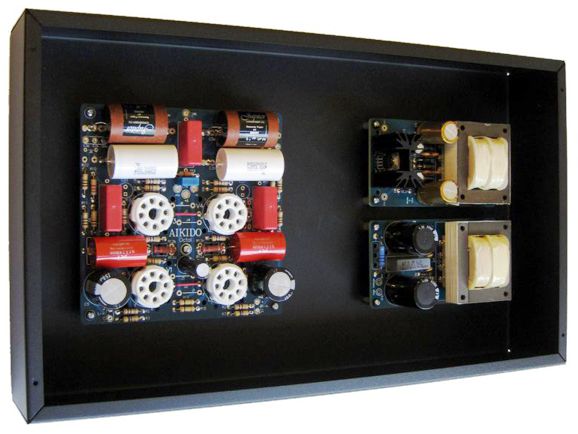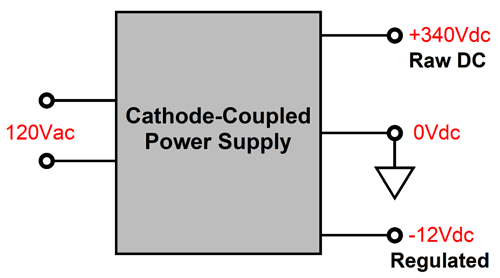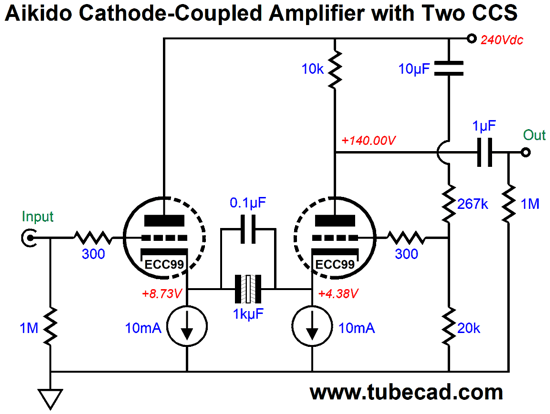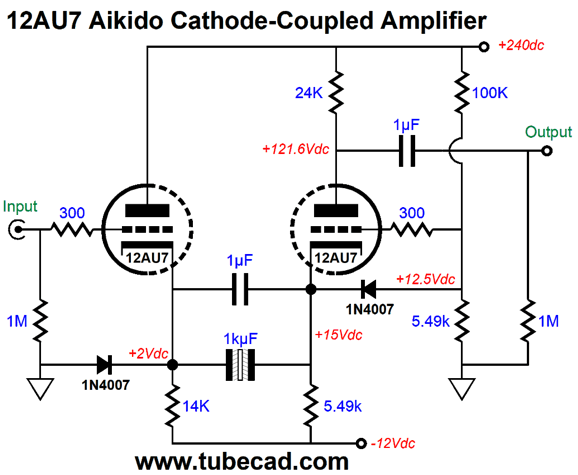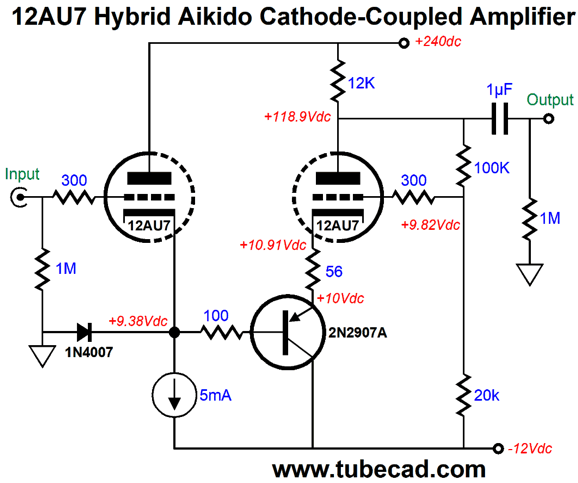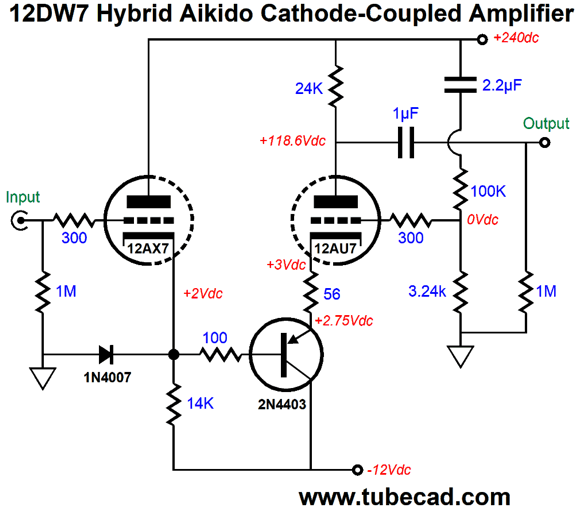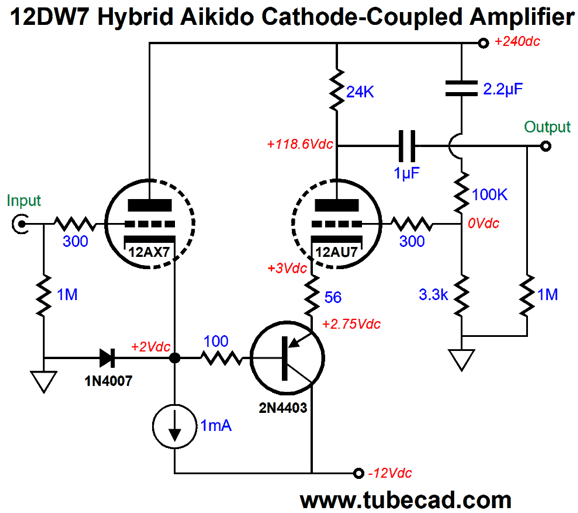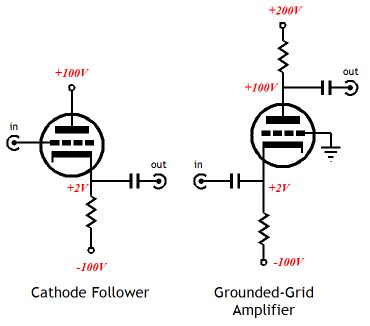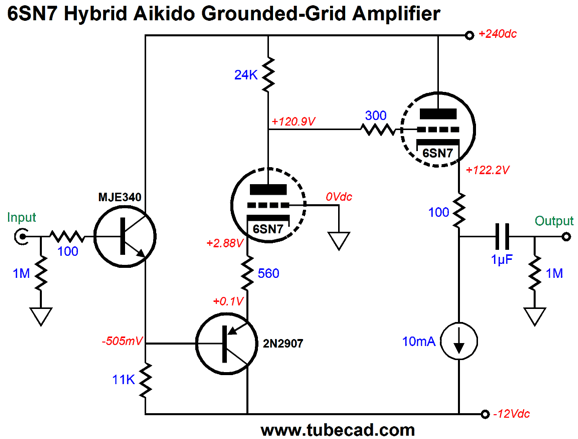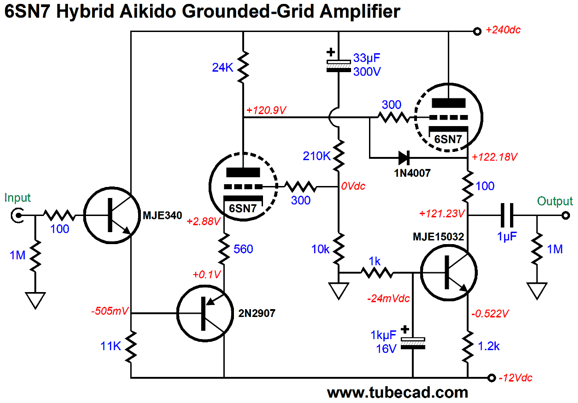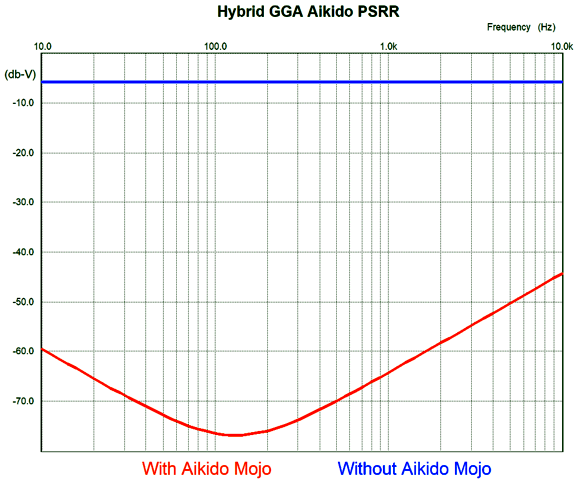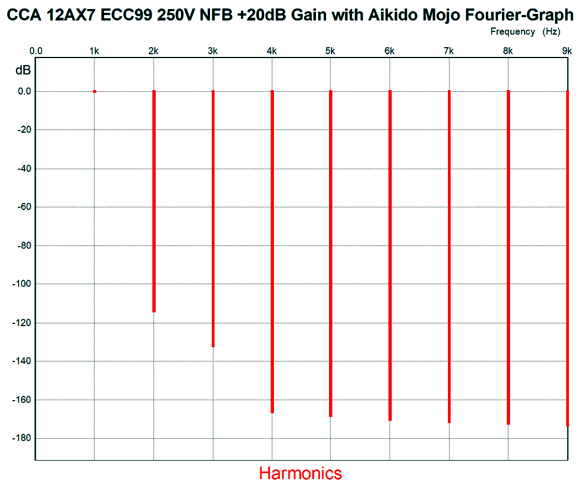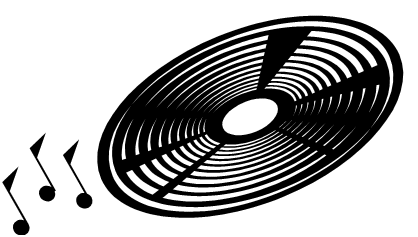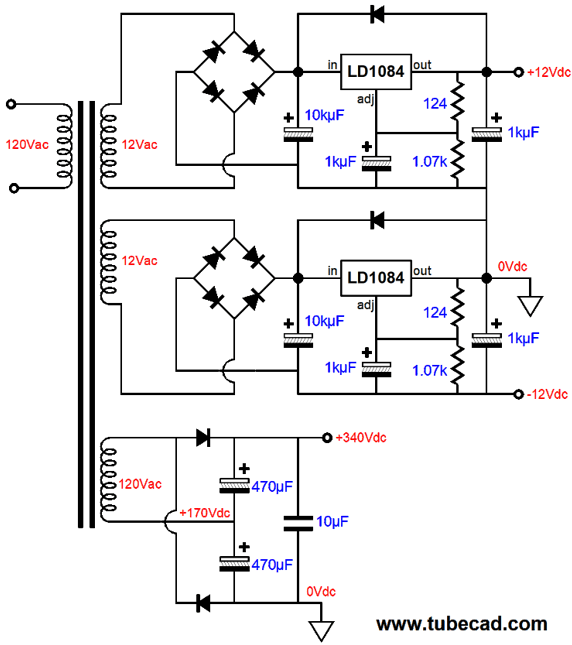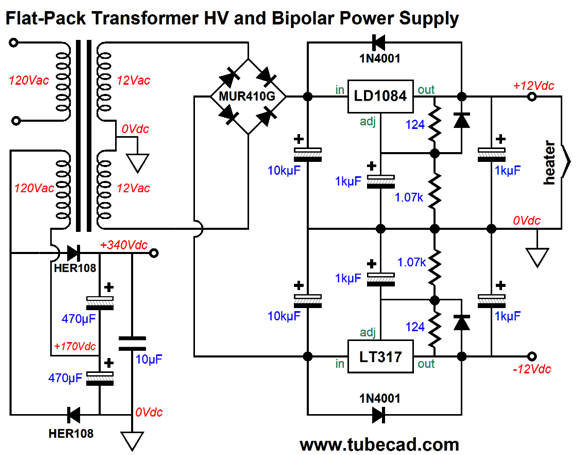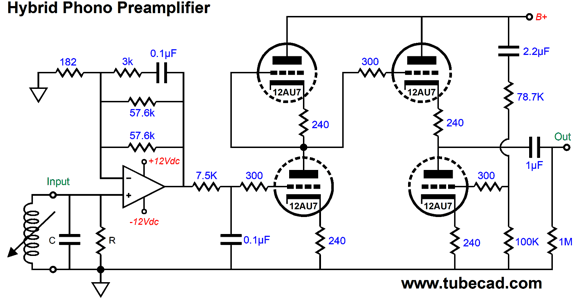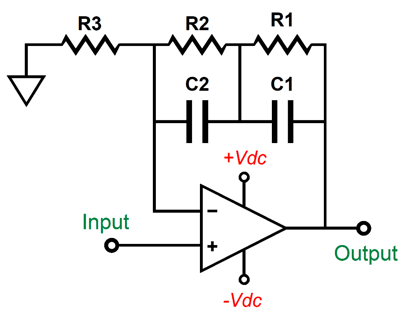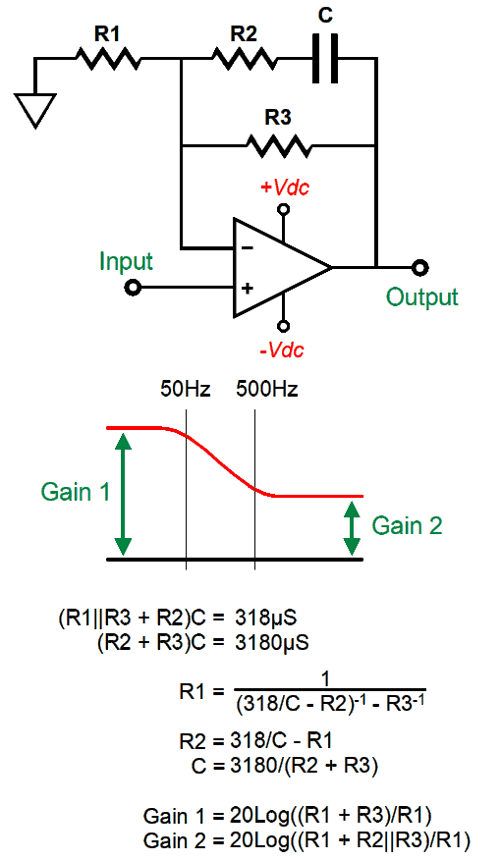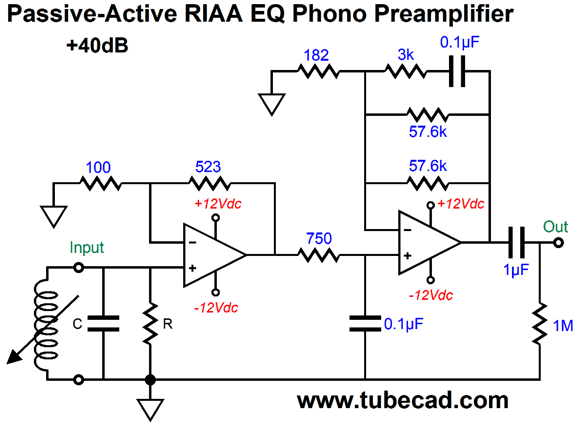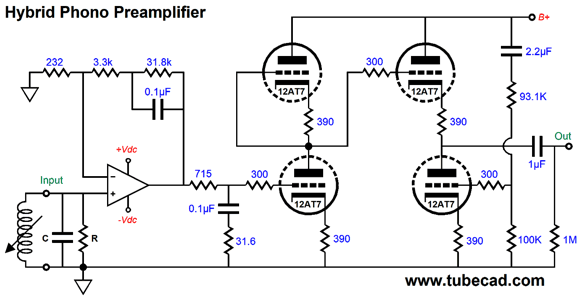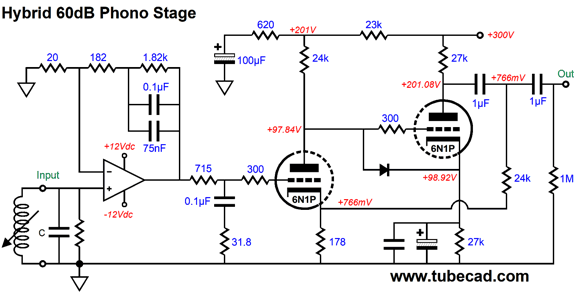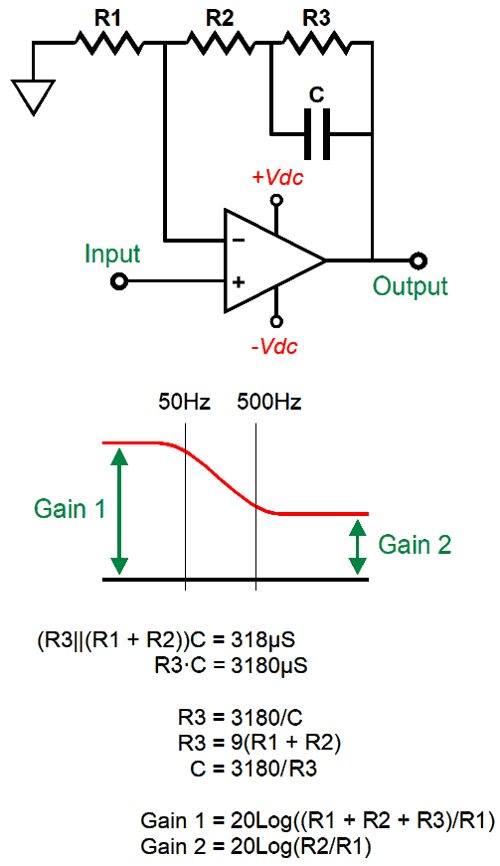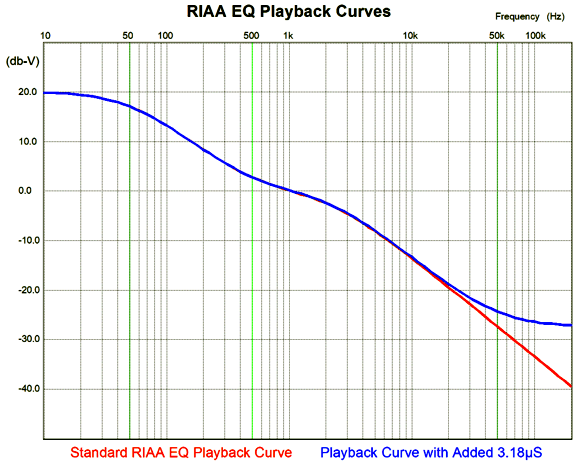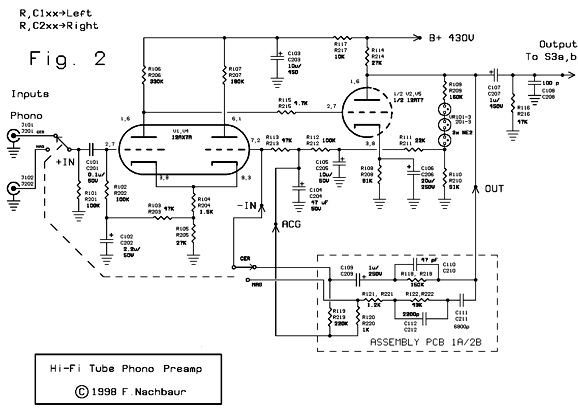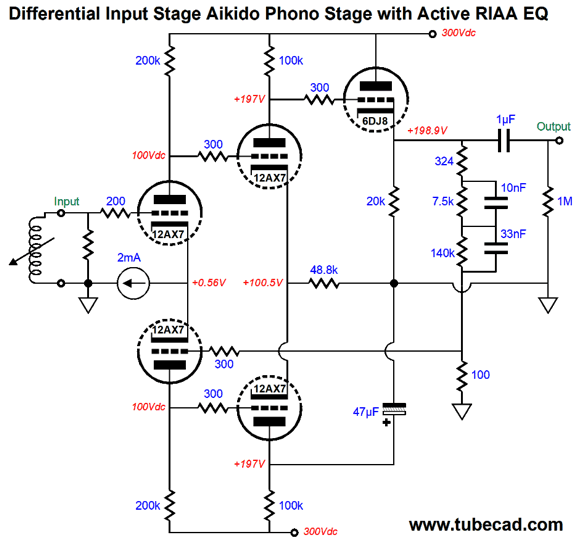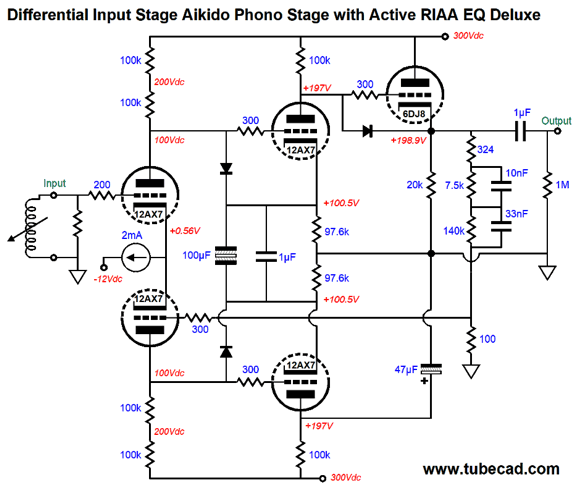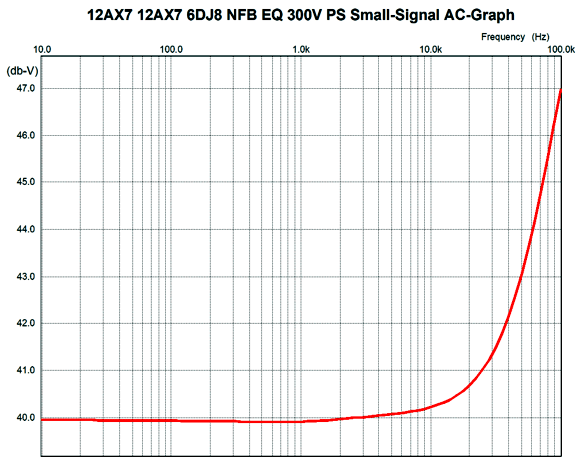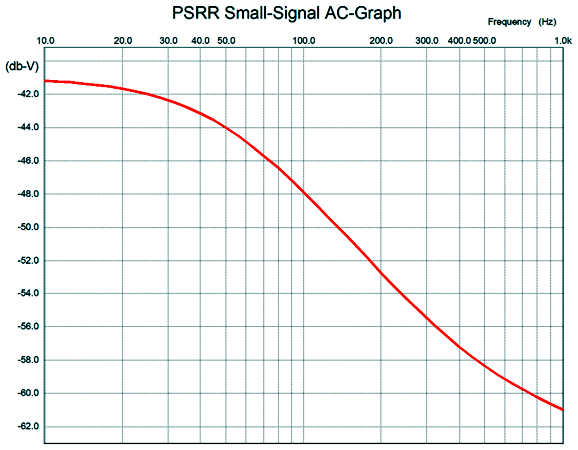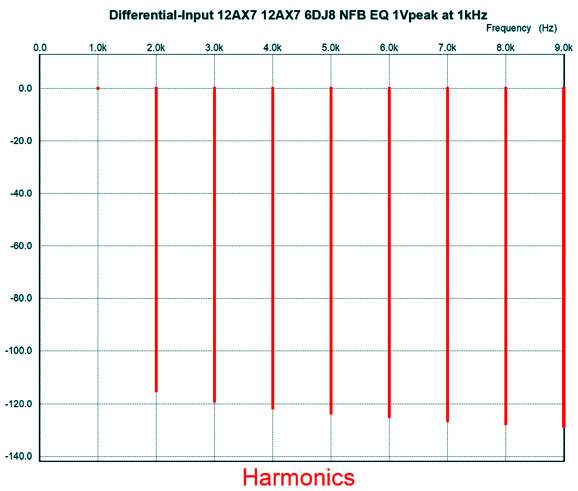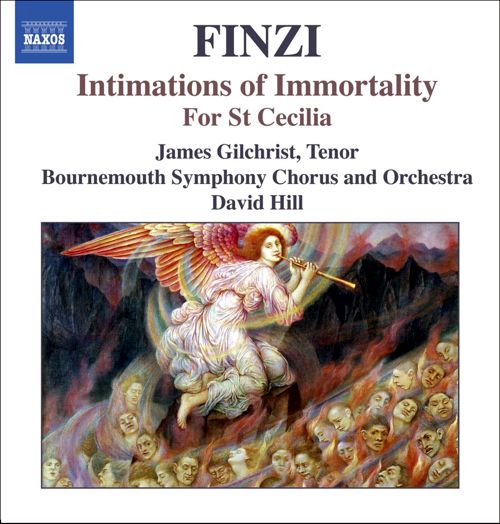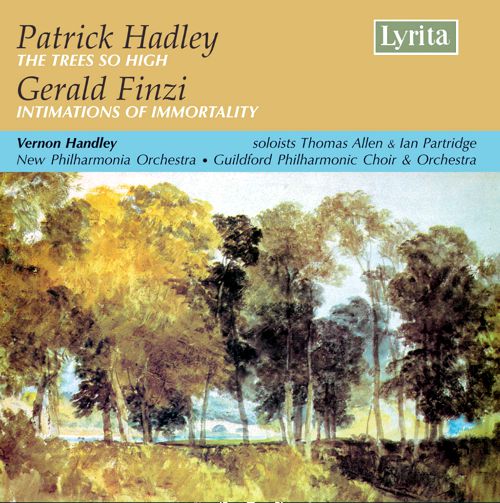| John Broskie's Guide to Tube Circuit Analysis & Design |
|
14 March 2020 Post 494
We await doom—well, at some of us do. My old neighbor (in his 70s), who has many health problems, is supremely indifferent to Wuhan Virus and makes no effort to avoid it. (Since China's Communist Government was bold enough to blame the USA for their obscene incompetence and limitless prevarication, I will now only refer to the virus as the "Wuhan Virus.") A bit of history: Prior to WWI, Germany was the Silicon Valley of the world, the undisputed center of technology, whether in mechanical design or chemistry or electronics or pharmaceutical invention. Once the USA was at war with Germany, we ignored her many patents. After the first world war, the USA was the new Silicon Valley of the world. A silver-lining. We should do something like this today. No, not steal Chinese patents. Instead, we should unshackle industry in The States, undoing much of the regulatory bourdons imposed by OHSA, EPA, FTC, and FDA, so the USA can once again make things, such as TVs, phones, antibiotics, medical equipment... The reason we shipped production to China was only partially due to labor costs. Imagine that you own a metal fabrication firm and you have heard that there is no chance that we will have enough respirators/ventilators, so you decide make them and offer them for free. The first thing you would do is not look up plans for building them, but hire a lawyer(s) to help you navigate about a thousand regulations and codes. The lawyer would explain that even if you made a few hundred units in the next week, it would be at least a year before you would have all the clearances needed to give them away. Dogs that do not bark. Note that Africa, with a huge Chinese presence and the weakest health-care systems, has gone relatively virus free. How's that possible? I remember seeing a map of the populations with the highest amount of Neanderthal genes. It overlays nicely with the map of worst hit populations with the virus, i.e. Northern Italy and China. Black Africans have zero Neanderthal genes. Those with a Neanderthal inheritance are born with benefits and liabilities in terms of susceptibility to certain illnesses. Could the Wuhan virus be targeting those with Neanderthal genes? The other day I was talking to the young (all female) staff of a local lunch restaurant I frequent. The topic was the Wuhan Virus. I pointed out that I had to be especially on guard as I fell into the category of those most at risk. My audience was puzzled and asked if I had pre-existing condition. My answer was that I indeed did as I have preexisted for so long that I am now 64 years old, a dangerous age it seems. They didn't believe me. They insisted that I simply couldn't be that old. (Nice!) I explained that I was old, real old, that I antiquate the great pyramids in the desert, that I predate dinosaurs, and that I find dirt to be a brash Johnny-come-lately. I lifted the theme of my riff from Logan Pearsal Smith, with complete confidence that none had ever heard of Smith, let alone have read him.
On to happier topics. I am finding the desire to layout a PCB for a 48VA flat-pack, low-profile, PCB-mount power transformer hard to resist. It won't be a first for me, as I have made such a PCB by hand long ago, using adhesive tape and small rub-on tape donuts and ferric chloride solution and a tiny drill press. In addition, the PS-10 was such a design, which used an Edcor PCB-mount transformer. Alas, this transformer was not a flat-pack design, as both the primary and secondaries were wound on the single bobbin. See post 307 for more details on this PCB. In fact, my Tr-PS-1, Tr-PS-2, and Tr-PS-3 achieve the flat-pack goal, as the two primaries and two secondaries are wound on two separate bobbins. But the design I am thinking about would use one of the 120Vac primary as secondary; thus, the ideal is one bobbin per each primary and secondary, as that would result in the lowest capacitance coupling between all windings.
(By the way, far too many to don't understand how useful the three transformer-mounted power supplies are (Tr-PS-1, Tr-PS-2, and Tr-PS-3). At $49 each, you get complete set high-voltage and low-voltage power supplies that just require wiring up to the wall voltage. In other words, using both a TR-PS-1 and a TR-PS-2 is effectively like having a flat-pack bipolar power supply, with the added advantage of being able to stager the turn-on for the heater power supply and the B+ voltage power supply; moreover, the PCB-mount transformer are rated for 30VA each, which combined exceed the 48VA flat-pack transformer. In other words, for less than $100, you can have the B+ voltage and heater power supplies taken care of and without the hassle of lots of wiring.) For many tube fanciers, a compact, low-profile flat-pack based bipolar power supply would prove a godsend, as the B+ voltage and regulated heater element power supply and power transformer would all be taken care of, resulting in little wiring. The downside to such a design is that flat-pack power transformer top out a 48Va, as far as I know. This means that we could no more than 100mA from a 165Vdc B+ voltage or 50mA from a 330Vdc B+ voltage; and only 1A from the 12V regulated heater power supply. Of course, if less B+ current were drawn, we could up the heater current, but the 48VA rating limits our ambitions.
On the other hand, your average-Joe 6DJ8-based two SRPP or CCDA circuit could easily be powered by such a power supply. In fact, many simple tube circuits would find this power supply ideal. For example, a stereo ACF or BCF or low-voltage Aikido circuit are possible choices; although in these two examples, the 12V power supply must be floated and referenced to 1/4th the final B+ voltage. What I find amazing is how creativity is spurred by limitations. Given a bipolar power supply with a high-voltage B+ voltage and -12Vdc negative power-supply rail, how many circuits can I think up to take advantage of the flat-pack power supply? Many, it turns out.
More Flat-Pack-Power Supply Circuits
If this schematic looks familiar, then you read post 414. A similar circuit appeared in post 457. Using the large-valued coupling capacitor between cathodes sidesteps the problem of dissimilar cathode-to-grid voltages. Because of the -12V power-supply rail voltage, we can replace the cathode resistors with resistors, without losing too much performance, as the negative power-supply rail allows us to use larger resistor values.
Here we see the overlay of Aikido mojo, as a portion of the B+ voltage ripple is fed to the right triode's grid, resulting in a null of the power-supply noise at the output. We can apply the same Aikido mojo technique to the hybrid cathode-coupled amplifier shown in post 339. Here is the circuit with no Aikido magic.
The 12DW7/ECC832 is a dual-triode tube that holds dissimilar triodes, a 12AX7 triode and a 12AU7 triode. The 2N2907 PNP transistor drives the 12AU7-type triode's cathode through the 56-ohm resistor. Okay, let add the mojo.
The small sampling of the power-supply noise is injected into the right triode's grid, forcing a noise null at the output. We can replace the 12AX7 triode's cathode resistor with a constant-current source (CCS), but we will have to alter the amount of B+ ripple we inject.
I switched PNP transistors to make the point that this part is not critical and it sees very little voltage drop.
Hybrid Grounded-Grid Amplifier
Alternatively, we could use solid-state devices, such as FETs, transistors, and MOSFETs, to drive the cathode. The following design uses the two-transistor diamond circuit and a bipolar power supply.
The input NPN transistor draws less than 1mA and it drives the PNP transistor, which in turn drives the cathode through the 560-ohm cathode resistor. The PNP transistor draws the same current as the triode above it, namely 5mA. The grounded-grid amplifier's output cascades into the cathode follower output stage, which is loaded by the 10mA constant-current source. Okay, let's now flesh out the design. I fleshed the cathode follower's constant-current source and added some Aikido mojo. When we inject signal into the grounded-grid amplifier's cathode, the signal emerges in phase at the plate; when inject signal into the grid, however, we have a grounded-cathode amplifier, which does invert the input signal at the plate. By injecting the correct amount of B+ voltage ripple into the grid we can force a ripple null at the plate. The 33µF capacitor at the top of the two-resistor voltage divider might seem ridiculously large in value, but I wanted to ensure that the power-supply noise null extended far below the ripple frequency of 100Hz or 120Hz. Here is the graph that shows how well the Aikido mojo addition works compare to no mojo.
Over the last two decades, I have received emails asking why I was so fixated on good PSRR, as none of the other tube gurus shared my obsession. The answer is that PSRR is where solid-state gear beats most tube gear, in a big way. I have heard high-end, all-tube systems that cost three times more than my minivan and that HUMMMMMED like a 1940's refrigerator. Well, what's wrong with that? The noise obscures micro details and sonic subtleties. Would you look upon the Grand Canyon with dirty classes? Or drink fine wine from a dirty glass? An easy test would be to build the above circuit and include a switch that would either enable or disable the Aikido mojo. My prediction is that after an hour-long sonic shootout, the Aikido Mojo version would be deemed far more dynamic, revealing and, fluid sounding. The MJE15032 NPN transistor has been configured as a constant-current source. It draws a little less than 10mA, which against the 120V voltage drop results in 1.2W of heat dissipation. The diodes are safety devices that are not conducting during normal use, but do snap on at start-up and shut-down. In SPICE simulations, the distortion was low.
With 1Vpk at 1kHz, the THD is close 0.0001%: no doubt, reality will be ten times higher, but that just brings it up to 0.001%.. The PSSR came in at better than –70dB at 100Hz and the output impedance was 400 ohms. The question is, Could a 48VA flat-pack power two channels? The two 6SN7 heater elements would be wired in series and powered by a regulator 12Vdc power supply, which would dissipate about 10W. Both channels audio circuitry will draw 32mA combined, which against a raw DC voltage of 330V, will create about 11W of heat. The general rule is that after rectification, we only yield about 78% of the transformer's VA rating as potential DC power dissipation. Multiplying 0.78 against 48VA equals 37.44W. In other words, the needed 21W of dissipation is far below the 37.44W result, so it should work.
Hybrid Phono Preamp
As some readers simply cannot wrap their heads around the idea of using two positive voltage regulators to create a bipolar power supply, here is an alternative version that uses a positive and a negative regulator.
No typo here; the LT317 is a high-performance adjustable negative regulator. The addition of the +12Vdc power-supply rail opens up a world of potential hybrid circuits. For example, we can use OpAmps, which make hybrid circuits such as headphone amplifiers and phono preamps possible, as we can exploit the low-noise amplification and high-current delivery potential that some OpAmps can offer. What follows is a hybrid phono preamp that mates a low-noise OpAmp to an Aikido amplifier output stage.
The OpAmp's negative feedback loop comprises half of the RIAA equalization curve (50Hz and 500Hz), with the low-pass RC filter made up of the 750-ohm resistor and the 100nF capacitor imposing the other half (2122Hz) of the RIAA curve. I like this blend of active and passive equalization, as I can trust the feedback network to implement the 20dB boost from 550Hz down to 50Hz. In addition, I definitely trust the RC filter to impose the 1st-order low-pass filter at 2122Hz. Active filters offer the advantage smaller capacitor values; passive filters, no dynamic limitations—in other words, they do not clip and can be overloaded only when the capacitor's breakdown voltage is achieved or the resistor catches on fire.
In contrast, trying to implement the entire inverse RIAA equalization curve with a negative feedback network with a non-inverting amplifier must fail, as the amplifier will bottom out at unity gain and not extend below unity. Moreover, the feedback network itself becomes a low-impedance load at high-frequencies, as the two capacitors shunt the two resistors. In addition, this arrangement of the OpAmp delivering far less than the target gain of 40dB allows us to use the passive second half of the RIAA equalization, as the OpAmp is not likely to clip, even in the face of pops and clicks from noisy LPs. If we had forced the OpAmp to deliver the full 40dB, however, this arrangement of half active and half passive equalization would only work with a high-voltage OpAmp and much higher bipolar power supply rail voltages. In addition, we would definitely run into the OpAmp's high-frequency limitations. Most audio OpAmps offer crazy high open-loop gain, say 100dB, which translates into a gain of 100,000. The catch is that open-loop frequency response falls off at around 10Hz at -6dB per octave. This means that if we set the OpAmp's gain to 60dB, the closed-loop high-frequency cutoff will be at 10kHz; if we set the OpAmp's gain to 40dB, however, the closed-loop high-frequency cutoff will be at 100kHz. This is why they make OpAmps with open-loop gains over 120dB. The punch line here is that by limiting the OpAmp's gain we don't run into high-frequency limitations. Still, this hybrid circuit may look complicated, but actually it isn't. For example, the two 57.6k resistors are used in parallel only because they do not make a 28.8k resistor. Here is the basic circuit.
Realizing the second half of the RIAA equalization curve (2122Hz) is easy, as the low-pass filter requires a time-constant of 75µS. in other words, 750 ohms against 0.1µF equals 75µS. If the resistor were 1k, then we would need a 0.075µF capacitor. Remember, µF means microfarads, i.e. 1/1,000,000 farads. By the way, we get the microsecond value from this simple formula: µS = 1000000/(2 πF) where F is the frequency. For example, if we seek the microsecond time constant for 2122Hz, we divide 1,000,000 by (2 × 3.14159… × 2122) and we get 75µS. Here is an all-OpAmp version of the phono preamp.
The input OpAmp provides very little gain, only ×6.23 or 15.9dB, with a combined gain of 40dB after the second OpAmp. If you need 60dB of final gain, say you are running an MC cartridge, you would up the input stage's gain by 20dB, in other words ×62.3 or 35.9dB. How would you do that? Easy. Replace the 523-ohm negative feedback resistor with a 2k resistor and the 100-ohm resistor with a 32.4 resistor. Okay, let's return to the hybrid version. What if we need something close +60dB of gain? We could simply replace the Aikido's input tube with a 12AX7, which will deliver 15dB more gain. Actually, I have stopped using the 12AX7 in my phono preamps, as I much prefer the sound from the 12AT7, which offers 11dB more gain than the 12AU7.
Another possibility would be to use two grounded-cathode amplifiers in cascade.
This phono stage is non-inverting, so there's no need to flip the cartridge's connections. The Russian 6N1P can prove an amazingly quiet tube, thus its inclusion here. The tube circuit is based on my Aikido cascade with my signature "cynosure" resistor. See post 426 for more details on this topology. The OpAmp deliver +20dB of gain, while the tubes supply the additional +40dB. Why so little from the OpAmp? It must deliver +40dB of gain below 50Hz; in addition, the highs are only flattened after the RC filter, so the OpAmp must amplify boosted highs. Think pops and ticks. I have snuck in two twists in this schematic. The first is that active implementation of the first half of the RIAA equalization differs from the previous example, wherein frequencies below 500Hz are boosted by 6dB per octave before flattening at 50Hz and achieving 20dB of greater magnitude. Both topologies work equally well, but differ in the required math.
The second twist is the inclusion of a fourth time constant of 3.18µS, which causes the preamp's inverse of the RIAA equalization curve to flatten above 50kHz, effectively creating a 6dB per octave boost above 50kHz. Why? Many argue that the record cutting lathes and amplifiers used by the makers of LP fall off at 50kHz, so the strict adherence to inverse of the RIAA recording equalization curve results in an unintended roll-off above 50kHz. Okay, let's say your loudspeakers offer bandwidth up to 100kHz and that you often listen to LPs with your dog or pet rat or bat, does this make any real sense? I doubt it. First of all, who says all LP cutting lathes and their associated amplifiers, no matter what brand or year of manufacture, do cut off at the same 50kHz frequency; and, besides, the cut-off will be at least -12dB per octave (-40dB per decade), not -6dB per octave (-20dB per decade). In order for the countervailing high-frequency boost to work would require a +6dB boost per octave after 50kHz, not a flat-lining above 50kHz.
Second, are we not ignoring so many other frequency limitations, i.e. roll-offs, such as the microphone and tape recorder high-frequency roll-offs? In addition, depending on your phono cartridges needle profile and tracking weight, repeated LP playing naturally dims the high-frequency content of the LP, as it wears away. Okay, since I find the reasoning behind implementing the fourth time-constant bogus, why did I include it in this circuit? I know that many enjoy the resulting sound, so I don't really care if their argument behind their preference is weak, as I do trust that they have a preference. Moreover, the fourth time constant comes in handy with fully active RIAA equalization, as it effectively increases the negative feedback loop resistance at high-frequencies. I have encountered tube-based preamps working much better with the added resistance in its feedback. Think about it: at ultra-high frequencies, the amplifier must drive the terminating feedback resistor, which is often only 100 ohms in resistance, so adding an additional 300 ohms makes the load four times less onerous.
Nachbaur's Hi-Fi Phono Preamp
The preamp can accept either ceramic or magnetic phono cartridges, as two selectable feedback equalization networks are included. Three neon bulbs are used in place of Zener diodes. The B+ voltage is a hot 430Vdc. The design even includes an automatic gain Control (AGC), which should work as a compressor. Unless Mr. Nachbaur is relying on the input tube's nonlinearities, I don't see how his ACG goal is achieved. It's interesting, I will grant. A tad too baroque for my tastes, however, as I prefer something bit more neo-classical. By the way, the etymology of "baroque" is fun, as it came from the French, where it meant "irregularly shaped," and it originally applied to misshapen pearls. When not referring to art from the 16th and 17th centuries, "baroque" is used to describe the fussily ornate. Of course, I could and would make several changes to the circuit, but a more productive path would be for me to take inspiration from it and create my own sui generis circuit. A phono stage must exhibit a flat frequency response, low distortion, and a high PSRR figure. In addition, depending on the line-stage amplifier used, we might need to add a low output impedance. The following schematic shows my take on a differential input stage in a phono preamp that achieves all four goals.
Five triodes are needed and the B+ voltage has been reduced substantially. I am not sure my design has achieved neo-classical status. For example, I doubt the many would emblazon this circuit upon their shirts, although I can see embroidery needlework on a wall-hanging—surely, the world doesn't need any more stitched homey saying, flowers, kittens, puppies... How does it work? The differential input stage DC couples to a cathode-coupled amplifier, which in turn DC couples to a cathode follower. The cathode follower then drives the highly reactive RIAA equalization network, which includes the added 50kHz inflection frequency. Okay, let's go over again in greater detail. The differential input stage loads the bridges cathodes with a 2mA constant-current source. The schematic shows the constant-current source terminating in ground. In reality, a solid-state constant-current source could never work with so low a voltage drop. The workaround is terminating the constant-current source to a negative power-supply rail, say -12Vdc. (In this case, we should add a safety diode from ground to the tied cathodes to protect the input tube at start-up, when the grids would be 12 volts more positive than the cathodes.) The next stage consists of a cathode-coupled amplifier, with both its grid driven with signal from the input stage. This is a big departure from Nachbaur's design, as the right triode in his input stage will see its plate voltage needlessly swing with the audio signal. To avoid this problem in my second stage the 47µF capacitor shunts the bottom triode's plate to ground. The 48.8k cathode resistor is not the 50k you might expect. Why not? Aikido mojo.
This design delivers an astoundingly good PSRR due to the careful selection of operating voltages and part values. How it works is that the input stage offers a truly dismal PSRR figure, as just about all the power-supply noise appears at its two outputs. Normally, this is a bug; but in this circuit, it's a feature. The cathode-coupled amplifier stage effectively acts like split-load phase splitter to the B+ noise, as both its grids see the same 100% power-supply noise from the differential input stage, thereby inverting the noise at its output, but not amplifying it. And, as 1 – 1 = 0, the inverted power-supply noise cancels at the output. The cathode follower is essential, not an optional frill, as the RIAA equalization network's two capacitors effectively short at high-frequencies, making a 424-ohm resistance in parallel with the 20k cathode resistor. Let us do a quick reality appraisal of the circuit. In SPICE simulations, this circuit works splendidly. Reality is much crueler. How so? In SPICE all triodes, resistors, and capacitors are perfectly matched; real 12AX7 triodes might be off by 5%, which was the old industry standard for audio tubes. If the output voltages differ by 10V, or even only 3 volts, the cathode-coupled amplifier will lock up, with one triode fully on, the other fully off. Think about it: 1% plate resistors can give rise to a worst-case 4-volt difference in plate voltages, as one plate resistor would equal 198k and the other, 202k; both of which would see the same 1mA of current flow. One workaround would be to place a 100-ohm potentiometer between the two cathodes in the input differential stage, with the scraper going to the constant-current source. No thanks. Beyond the hassle of having to adjust the potentiometer with new tubes or with old tubes drifting off target, potentiometers often lose contact, become noisy, or act like diodes. Another elaborate workaround would be to add a DC servo. The easier workaround is to use a capacitor to couple the cathode-coupled amplifier's cathodes, while giving each of its triodes its own cathode resistor.
Okay, I pulled one of my signature moves of sneaking in more than one change. The diodes are safety devices, as we never want the cold triodes in the cathode-coupled amplifier and the cathode follower to see their grids being 300 volts more positive than their cathodes. Since the cathode-coupled amplifier will see anti-phase signals at its grids, don't we run the chance that the diodes will engage due to the audio signals. They might within a power amplifier, but in a phono preamp this is unlikely, as signal amplitudes leaving the input differential stage are tiny. The coupling capacitor is made up of a non-polarized electrolytic capacitor in parallel with a film capacitor. The constant-current source now terminates into a negative power-supply rail. (Missing is a protection diode for the input stage.) Okay, how well does this preamp perform? Here is the frequency-response plot.
I restricted myself to standard values RIAA equalization network, yet the plot is fairly flat, being within 0.05dB from 20Hz to 20kHz. Because I included the 3.18µS (50kHz) time constant, the highs are supposed to climb upward at high-frequencies. (When playing LPs, the highs above 50kHz will actually fall off, not rise.) The PSRR is stellar, coming in at -49dB at 120Hz.
The THD at 1Vpk at 1kHz approaches an insanely low 0.001% according to SPICE simulations.
So what's not to like? One hassle is that we should use two heater power supplies, each referenced to a different voltage, as the differential input stage cathodes rest near +0.5Vdc, but cathode follower's heater sits 200V above ground potential. I would power the input tube's heater element with the negative power-supply -12V rail voltage and give the cathode-coupled amplifier and cathode follower a regulated power supply referenced to 150Vdc, which splits the difference between their cathode voltages (100V and 200V).
Music Recommendation: Finzi's Intimation of Immortality
Tidal did have it, fine reading by Ghizela Rowe no less. I recognized her altogether charming voice, as have heard her recite poetry before. Searching her name at Tidal yielded many tracks, all spoken word. As I skipped from poem to poem, album to album, I spotted Wordsworth's poem, Ode: Intimations of Immortality from Recollections of Early Childhood. "There was a time when" I had memorized the poem, which betrays my truly appreciating it. Tidal delivered about six readings of the poem. For me, the poem must be read by an older man, wearied, but dignified, never blustering, always contemplative. Thus, I found Sir Cedric Hardwicke's reading most satisfying. Yet, and yet… Michael Sheen, the 51 year-old Welch actor, delivers a compelling reading that is uttered in a quiet, near confessional tone with a young-sounding voice. And young he was, a mere 25 when the recording was made. Moreover, his slight whisper of a Welch accent I find enchanting. (He played Tony Blair in 2006's movie, The Queen.) Well, from Intimations the poem to music based on the poem came naturally. I have been huge fan of Gerald Finzi ever since my son's godfather, Ken, introduced to his music over 30 years ago. Finzi, an English composer broke the unuttered, but strictly observed rule to pay homage to the great English poets, Shakespeare, Milton, Blake, Wordsworth…by not setting their poems to music. Think about it, Shakespeare has entered classical music, but not by Englishmen. Mendelssohn, A Midsummer Night's Dream; Schubert, An Sylvia; Gade, Hamlet Overture; Schumann, Julius Caesar Overture; Verdi, Macbeth; Dvořák, Othello Overture; Prokofiev, Romeo and Juliet; Sibelius, The Tempest—none were Englishmen. Okay, Walton did compose his Suite from Henry V, but this was a film score; ditto Korngold and Shostakovich, although their works have now entered the standard classical repertoire. In contrast, American composers have not been so reticent, as they have set Emily Dickinson's and Whitman's poetry to music. For example, Samuel Barber, Aaron Copland, and Elliot Carter composed works on Dickinson's poems. Why the difference in attitude between English and American composers? In general, we Americans seldom hold anything as sacrosanct. Another possibility is that the King James Bible is in itself a near poetical masterpiece, which bestowed a sacred overlay on all great English poetry in England. Not all translations of The Bible into the vernacular, however, count as beautiful and memorable reads. Indeed, if you have read any of the modern translations in English, you cannot escape the ensuing mix of boredom and disgust. Surely you know what I mean. For example, King James Bible reads "… neither cast ye your pearls before swine, lest they trample them under their feet, and turn again and rend you," but becomes in modern translations, "Don't throw pearls down in front of pigs. They will step all over them and then bite you." The question to ask is not which is more easily understood, but which is more spiritually attuned and harder to forget? Do not forget that when the King James Bible was written the expectation was that it was to be read aloud, not silently. Read aloud "pearls" and "pigs" and the unintended alliteration jars. Finzi's composition, Intimations of Immortality, cleverly begins with a purely instrumental movement. As the music progresses, our memory of the Wordsworth poem recites itself in our mind, fitting the music perfectly. With the second movement, the singing begins—and what beautiful singing it is. Tidal offers at least two recordings, one on the Naxos label and one on the Lyrita label. The former is the crisper recording, but the latter offers other charms, i.e. Ian Partridge’s stellar singing; both are worth listening to.
The British music critic, John France, sums up this music nicely in a review of the Lyrita CD :
//JRB
*A Litany in Time of Plague
User Guides for GlassWare Software
For those of you who still have old computers running Windows XP (32-bit) or any other Windows 32-bit OS, I have setup the download availability of my old old standards: Tube CAD, SE Amp CAD, and Audio Gadgets. The downloads are at the GlassWare-Yahoo store and the price is only $9.95 for each program. http://glass-ware.stores.yahoo.net/adsoffromgla.html So many have asked that I had to do it. WARNING: THESE THREE PROGRAMS WILL NOT RUN UNDER VISTA 64-Bit or WINDOWS 7 & 8 or any other 64-bit OS. I do plan on remaking all of these programs into 64-bit versions, but it will be a huge ordeal, as programming requires vast chunks of noise-free time, something very rare with children running about. Ideally, I would love to come out with versions that run on iPads and Android-OS tablets.
//JRB
|
|
I know that some readers wish to avoid Patreon, so here is a PayPal button instead. Thanks. John Broskie Special Thanks to Francis Oconnor John Gives
Special Thanks to the Special 84
I am truly stunned and appreciative of their support. In addition I want to thank the following patrons:
All of your support makes a big difference. I would love to arrive at the point where creating my posts was my top priority of the day, not something that I have to steal time from other obligations to do. The more support I get, the higher up these posts move up in deserving attention. If you have been reading my posts, you know that my lifetime goal is reaching post number one thousand. I have 509 more to go. My second goal was to gather 1,000 patrons. Well, that no longer seems possible to me, so I will shoot for a mighty 100 instead. Thus, I have 16 patrons to go. Help me get there.
Only $12.95 TCJ My-Stock DB
Version 2 Improvements *User definable Download for www.glass-ware.com |
||
| www.tubecad.com Copyright © 1999-2020 GlassWare All Rights Reserved |

